Ripen Fruit with Ethylene Project
On the outside, the fruit ripening process is reflected in color, odor, and hardness changes. On the inside, there’s a composition change as the starch that makes up the fruit is converted to sugar. Sometimes fruit at the grocery store, particularly pears, is sold unripe. Is there a way to accelerate the fruit ripening process at home? Find out with this easy kitchen science project.
What You Need:
- 4 unripe apples or pears
- 2 ripe bananas
- 4 gallon-sized, zip-lock baggies (big enough to hold both a pear and banana)
- Sharp knife
- Cutting board
- Shallow container (big enough to fit half the apple or pear)
- Lugol’s iodine solution
- Clock/timer
- Pen and paper
- Safety gear: goggles, gloves, and lab apron
- Adult help
What You Do:
1. Place an unripe apple or pear in each of the four baggies. (We used pears.)
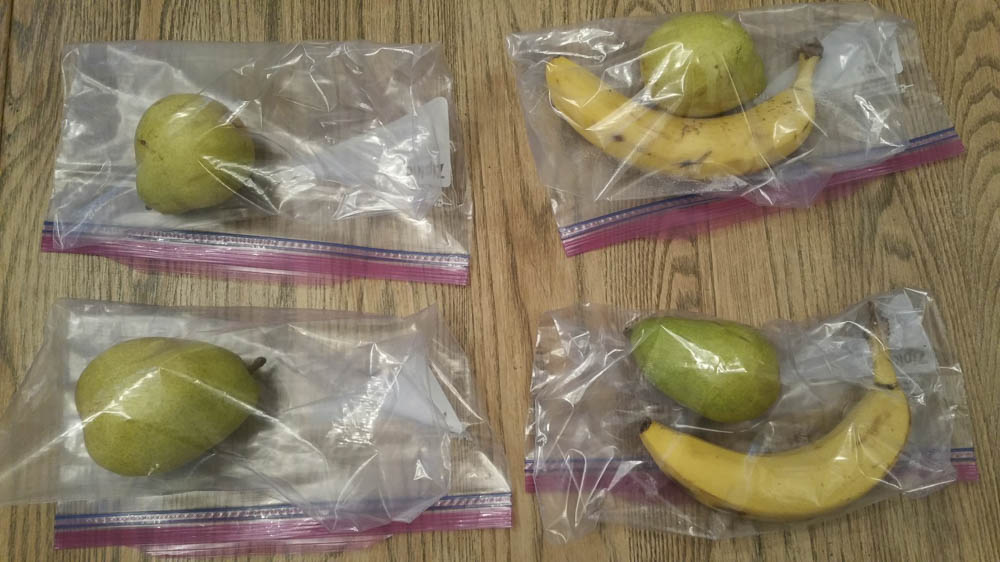
2. Place one ripe banana in two of the baggies and zip all baggies closed. The bags without bananas are the control and will show the normal fruit ripening process. The pears with the bananas are the test.
3. Observe how the pears (or apples) look. Record your observations in your lab notebook.
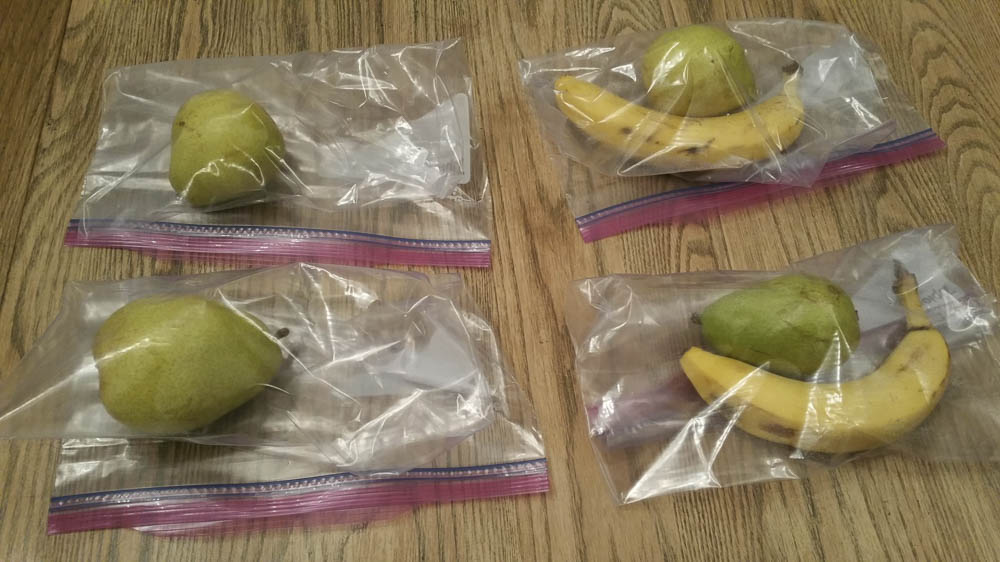
4. Repeat step 3 over the next two days.
5. On the third day, put on your safety gear and have an adult help you pour the iodine solution into the bottom of the shallow tray so it’s just covered. (We used a small plastic plate.) Be careful with the iodine solution as it will stain skin, clothes, and other surfaces.
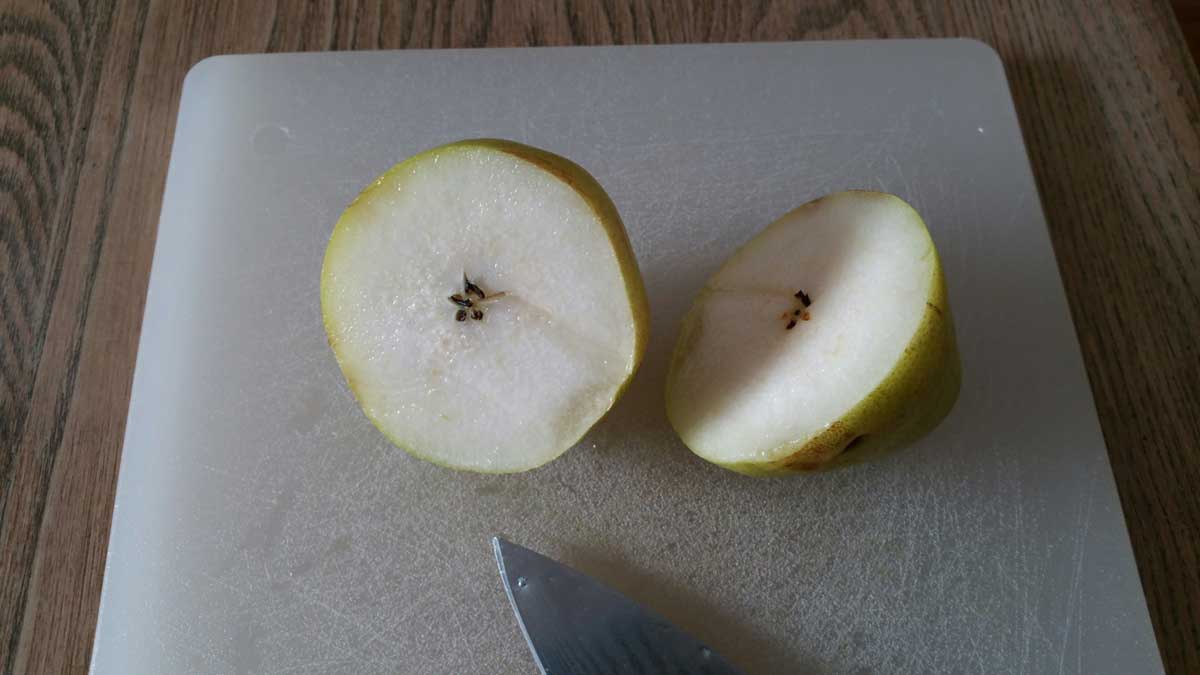
6. Have an adult help you cut one pear (or apple) into cross sections.
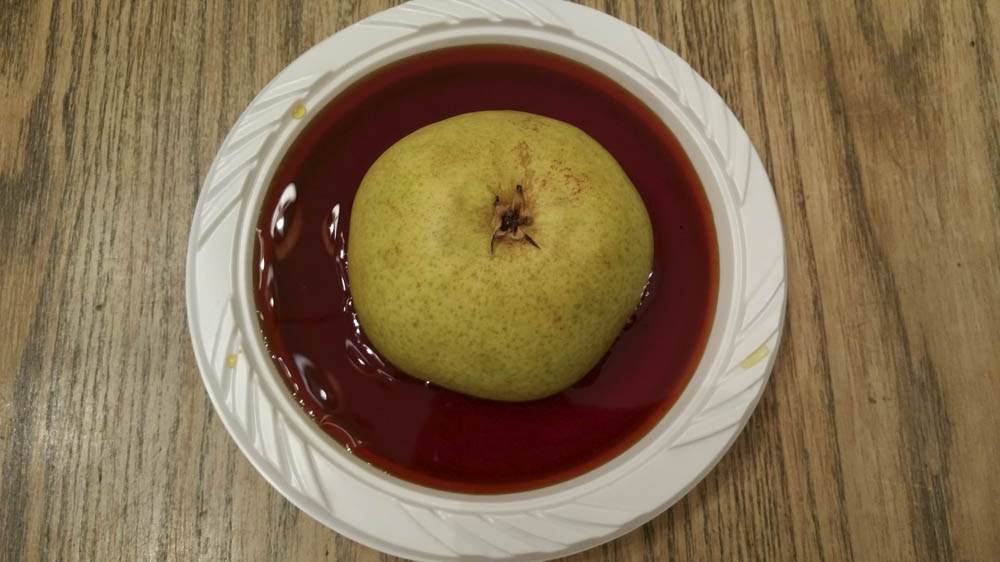
7. Place one half of the pear (or apple) cut side down into the iodine solution for one minute.
8. Remove from the solution and carefully run water over the face of the fruit to remove the stain.
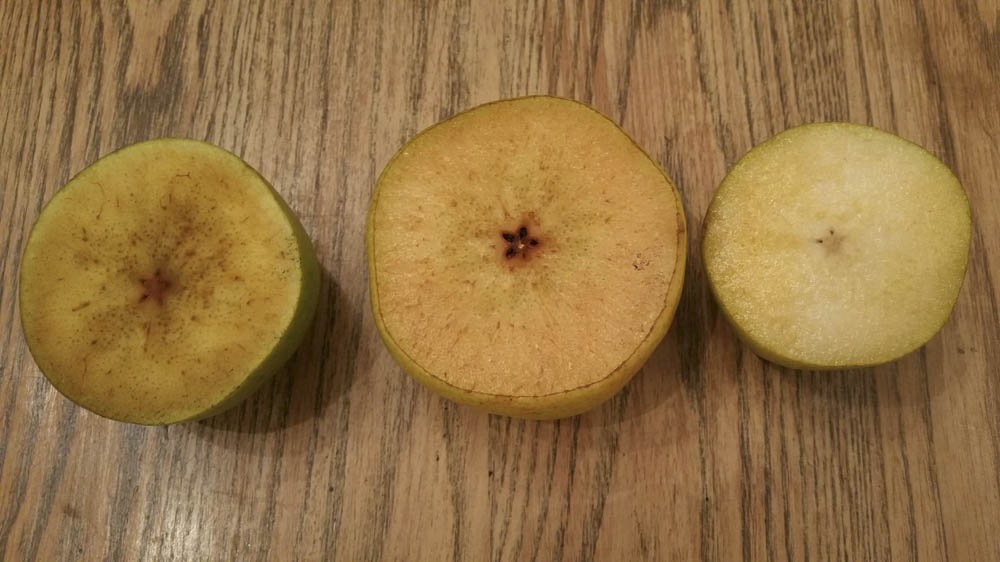
9. Observe and record the level of staining on each cross-section of pear (or apple) using a predetermined ripeness classification system. For example, you could categorize the fruit as either highly stained, stained, or unstained.
10. Repeat steps 7-9 with each cross section of fruit.
11. Which pear (or apple) is more ripe—the control (without the banana) or the test (with banana)? Why do you think that is?
What Happened:
The Lugol’s iodine solution test indicates the presence of starch. The iodine solution, which is an aqueous solution of 1.8% iodine and 3.0% potassium iodide, binds with starch, producing a dark color. Therefore, the more stain the fruit shows, the more starch it contains and the less ripe it is. Conversely, the less stain the fruit shows, the more ripe the fruit is. The fruit categories of highly stained, stained, or unstained might correlate to unripe, ripe, and overripe.
But why did the fruit ripen? Some fruits, like apples, pears, and bananas, produce a hormone gas called ethylene with ripening. Damaging the fruit (bruising) also releases the hormone. Ethylene changes their flavor, as the starch inside is converted to sugar, as well as their texture and color. By closing up a banana with a pear in a sealed baggie, we applied additional external ethylene, triggering the natural ripening process.
For commercial growers, it’s important to harvest fruit before it’s ripe. Since ripe fruit is often softer, transporting it to a grocery store in a truck could easily damage the fruit.
For further study:
- What would happen if you used a whole bunch of bananas in a bag with an unripe pear? Try it and see!
- See if the technique works on avocado or another type of fruit.
- If bruised fruit produces ethylene, compare ripening using a damaged banana and one without bruising.





